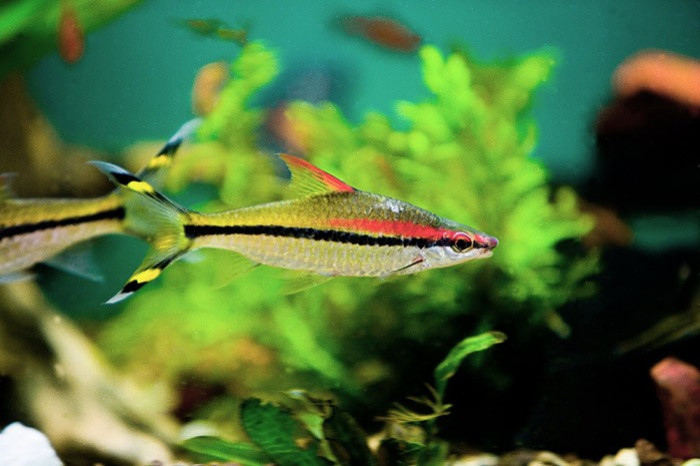Roseline Shark's Beauty Makes it Endagered Species

Puntius Denisonii, one of the most popular ornamental fish in the world is now on the verge of losing its identity mainly because of its beauty.
Better known as the Roseline Shark, Puntius Denisonii is bearing the brunt of rapid international trade and economic development leading to collateral damage to the freshwater fish's habitat.
The Roseline Shark is classified as Endangered by the International Union for Conservation of Nature (IUCN), as it is targeted and collected indiscriminately for the ornamental fish trade and its habitat is being impacted by water pollution from plantations and urban areas.
This beautiful species is endemic to the rivers and fast flowing warm streams ranging from 15 to 25 C located in Western Ghats area of Kerala and South Karnataka in South India.
Within the Western Ghats, catchments in the southern part of the region in Kerala, Tamil Nadu and southern Karnataka have the highest freshwater species richness and levels of endemism, but also contain the highest number of threatened species.
According the justification given for the assessment information, Puntius denisonii has been assessed as Endangered as populations have declined by more than 50 percent in the recent past due to indiscriminate exploitation for the international aquarium pet trade.
The report further noted that these declines are expected to continue in the foreseeable future unless local management plans, as well as national and international legislations are created and implemented. The species also has a restricted range with an area of occupancy of less than 300 km² with continuing decline in quality of key habitats.
According to the assessors, collection for the international aquarium pet trade is the single major threat to the Roseline Shark, whose population has declined at a rate of 70 percent at key collection sites.
The Roseline Shark has torpedo-shaped body with a red line running her till her mid length from its snout, and a black line running her entire length from her snout to the tail. Because of its calm nature and easy schooling people prefer to keep them in group of four or more in fish tanks. Keeping these fish away from the suitable climate has affected its breeding.
© Copyright IBTimes 2024. All rights reserved.





















